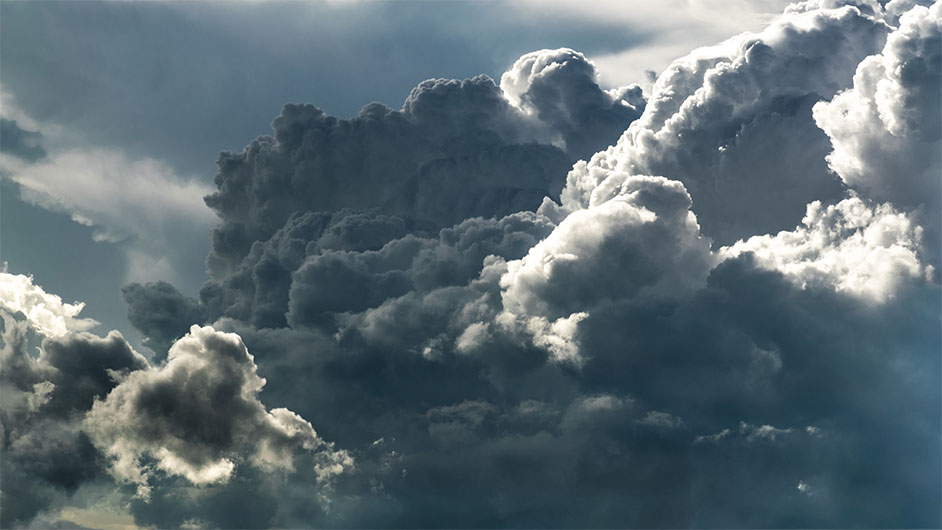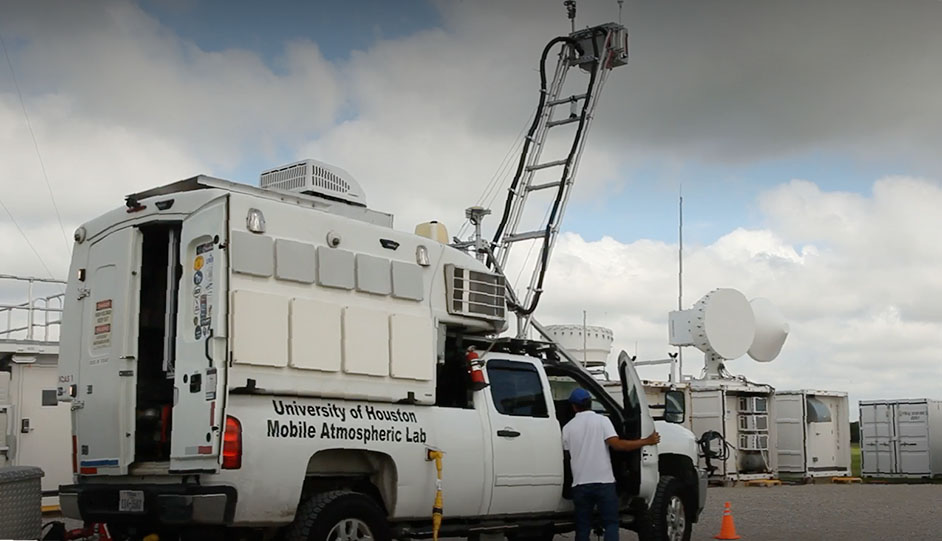Research Associate Professor James Flynn Studies Atmospheric Particles from Industrial and Natural Sources
Dozens of scientists from around the country are descending on Houston during its smothering summer months to study the impact of pollution on clouds and storms.

This collaboration is called TRACER, which stands for TRacking Aerosol Convection interactions ExpeRiment. Aerosols are tiny, solid particles in the atmosphere that can be emitted by natural sources like dust, or from manmade sources such as refineries, power plants or cars.
“We know aerosols play an important role in forming clouds and that plays an important role in precipitation,” said Michael Jensen, principal investigator of the study and meteorologist at Brookhaven National Laboratory.
"We believe aerosols also have a role in actually strengthening storms as they form.”
Existing models point to this hypothesis, but there has been little observational research. This is where the Houston research comes into play.
James Flynn, research associate professor of earth and atmospheric sciences at the University of Houston, is contributing to the study through his work with the UH Mobile Atmospheric Lab, a truck outfitted with various instruments.
“We’re looking at pollution, such as ozone, carbon monoxide and sulfur dioxide,” said Flynn, a faculty member of the UH College of Natural Sciences and Mathematics. “This could be coming out of industrial facilities or natural sources.”
One of the instruments on the roof of the truck bounces an infrared laser off clouds and particles in the air.
When you fly into big cities like Houston, Flynn explains, you can often see a brown hazy layer near the surface. The instrument measures the height of the transition, where it goes from polluted to clean.
Suite of Instrumentation
The TRACER experiment uses different instruments around the Houston area to gather data from October 2021 to September 2022. The experiment’s “intensive operational period” lasts from June to September 2022.

In La Porte, Texas, near the municipal airport, TRACER researchers set up a large observatory that gathers data 24 hours a day, seven days a week. It is provided by the Department of Energy (DOE) Office of Science’s Atmospheric Radiation Measurement user facility.
Weather balloons, or radiosondes, are launched four times a day. The balloons carry battery-powered sensors that take detailed measurements of the atmosphere. This summer, on days when storms are expected, or when there are at least convective clouds, more balloons will be released. Convective clouds look like they are stacked high on top of one another and are indicative of thunderstorms.
Other instruments include a precipitation radar scanner in Pearland, Texas. It tracks convective clouds and their progression.
During the intensive operational period, two tethered weather balloons will be located at Smith Point, on the eastern edge of Galveston Bay, and near Guy, Texas, dozens of miles southwest of Houston. These sites will help researchers understand the variability of aerosols and weather activity between urban and rural environments.
TRACER is funded by the DOE’s Office of Science. Flynn’s involvement with TRACER is funded by DOE with additional funding from the Texas Commission on Environmental Quality.
- Rebeca Trejo, College of Natural Sciences and Mathematics